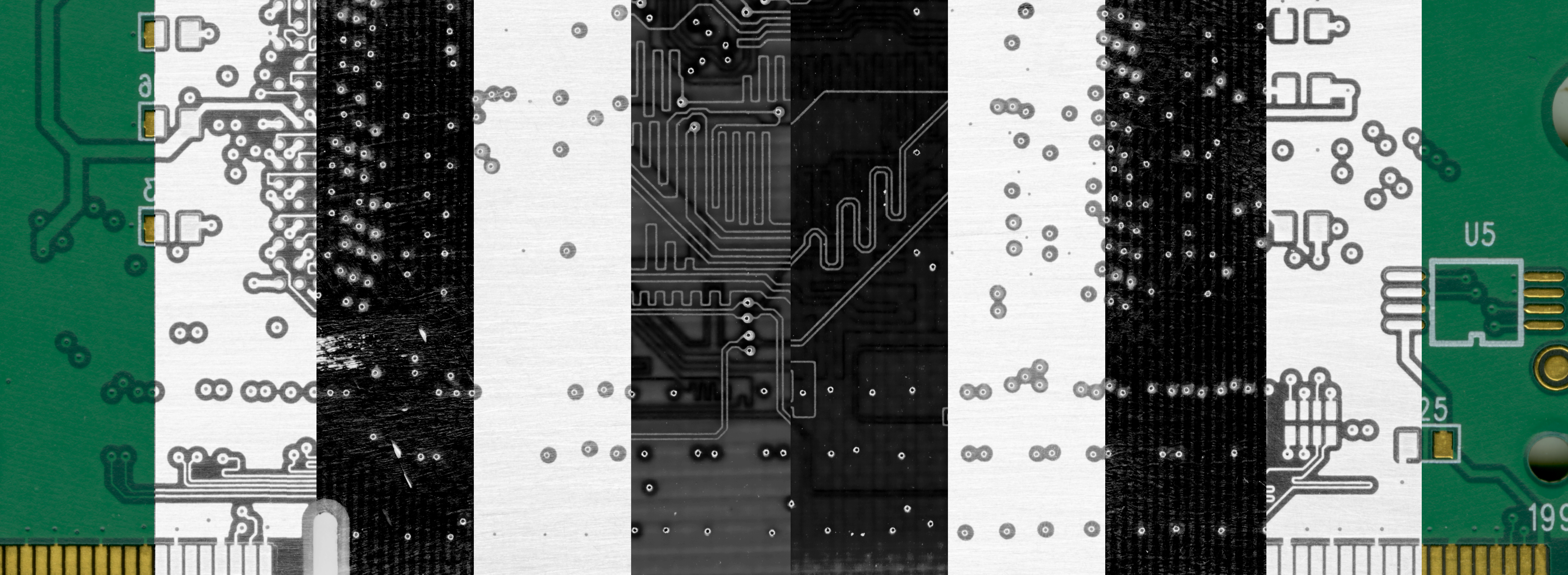3D printing in Electronics Manufacturing
Merging 3D printing with optical and CT-Scan imaging systems for re-creating PCBs
Digital Data Manufacturing (DDM) merges the power of 3D printed electronics & manufacturing with the additional processes of milling/polishing, pick and place, automatic optical inspection and electrical test/measurement, etc. This state-of-the-art of DDM now permits creating substrates and packages with interconnects and vias, placing electronic components, combined with pre and post processes and metrology.
The process of Quick PCB Reverse Engineering (RE) and fabrication is becoming increasingly important as spare parts are needed for existing systems when manufacturing data is no longer available. A single failed PCB can take an aircraft, ship, nuclear power plant or transportation system offline indefinitely when spare parts aren’t available. PCB RE creates the data needed for DDM and/or traditional PCB manufacturing.
Merging destructive or non-destructive PCB Reverse Engineering technologies with DDM permits rapid repair of mission-critical systems potentially even in the field!
Recent developments in the application of state-of-the-art CT-Scan technology to non-destructively recreate manufacturing data (Gerber, Drill, Netlist & Schematics) for legacy multilayer PCBs is showing progress. The poster will share actual X-Ray images of a multi-layer PCB and the resulting manufacturing data that was created with feedback on the pros and cons of this technology.
It is not enough to re-create traditional PCB CAD data if DDM is to be used. This manufacturing data must be converted into a format that feeds into the three approved IPC process types (1, 2 and 3) for printed electronics.
Finally, the other facets of DDM mentioned above must be supported in order to produce viable, tested spare parts. These other processes will be reviewed, including photos, etc.
This poster presents the latest in research and development in this growing area of interest. Merging 3D printing with optical and X-Ray imaging systems for creating PCBs when manufacturing data is no longer available.

Introduction
The latest R&D in the growing area of merging 3D printing with other manufacturing processes including Optical and X-Ray imaging systems for creating PCBs when manufacturing data is not available.
Digital Data Manufacturing (DDM)
DDM merges the power of 3D printed electronics & manufacturing with the additional processes of milling/polishing, pick and place, automatic optical inspection and electrical test/measurement, etc.
The state-of-the-art of DDM now permits creating substrates and packages with interconnects and vias, placing electronic components, combined with pre and post processes and metrology.

Precision Multi-Material, Multifunction Solution
Direct Digital Manufacturing (DDM) is more than just 3D printing.

Direct Digital Manufacturing Electronic Packaging

What if required data is not available for DDM?
PCB Reverse Engineering (RE) provides the data
Quick PCB Reverse Engineering (RE) and fabrication/repair is becoming increasingly important as spare parts are needed for existing systems when manufacturing data isn’t available. A single failed PCB can take an aircraft, ship, nuclear power plant, transportation system, etc. offline indefinitely when spare parts aren’t available. PCB RE creates the data required for DDM and/or traditional PCB manufacturing.

PCB RE Flowchart – All inputs and outputs

Destructive Optical PCB RE Process
Merging destructive or non-destructive PCB Reverse Engineering technologies with DDM permits rapid repair of mission-critical systems potentially even in the field (i.e., at the power plant)…!

Non-Destructive PCB RE Process
Recent developments in the application of state-of-the-art CT-Scan technology to non-destructively recreate manufacturing data (Gerber, Drill, Net list & Schematics) for legacy multilayer PCBs is showing progress.
Data Conversion and Process Types
It is not enough to re-create traditional PCB CAD data if DDM is to be used. This manufacturing data must be converted into a format that feeds into the three approved IPC process types (1, 2 and 3) for printed electronics.
- IPC Process Types – Three types of 3D printed electronics processes were approved:
- Type 1 — Using printed electronics processes on a planar substrate
- Type 2 — Using printed electronics processes on a nonplanar substrate
- Type 3 — Using printed electronics processes to fully build and functionalize a device in a 3D space (no starting substrate)

Integrate Optical Inspection Measurement with DDM PCB RE
Finally, the resulting parts from DDM must be confirmed to be correct – viable, inspected spare parts. The same optical system that performs PCB RE can also provide inspection & measurement.

Beyond 3D printing
DDM Processes
- Closed loop Feedback
- Inspection
- Repair
- Augmentation
- Enhancement
- Re-Engineer
- Technology Conversion
Summary: A Factory in a Tool… in the field!
-
PCB Re-Engineering
-
Micro-dispensing
-
Micro-spraying
-
Micro-milling
-
Digital Polishing
-
Pick and place
-
Post processing Save
-
Measurement & Inspection
-
In situ monitoring
